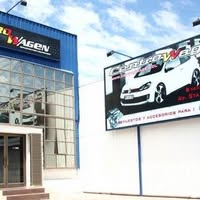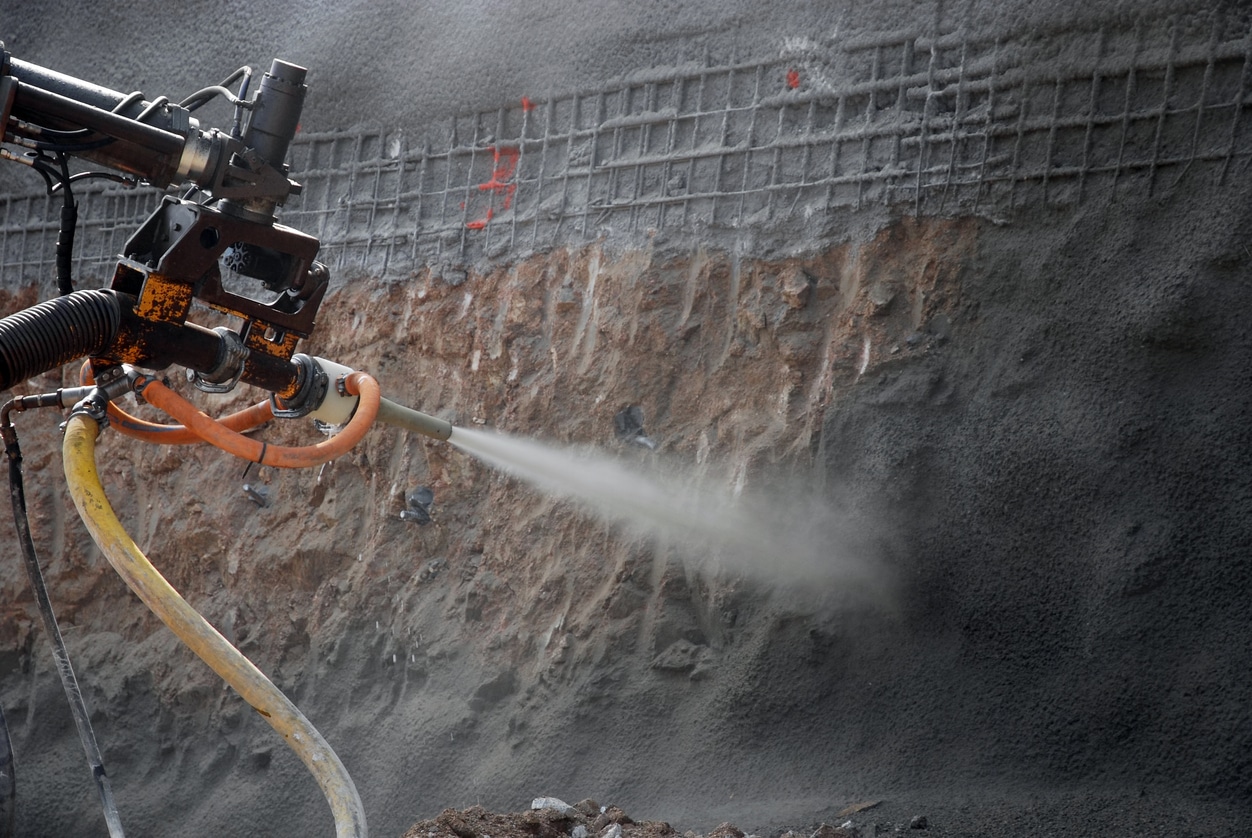Introduction
Mining is the backbone of industrial economies, providing essential raw materials for everything from construction and infrastructure to technology and energy. Yet, beneath the surface, mining faces some of the most difficult engineering challenges in the world: unstable rock formations, water ingress, seismic activity, and the constant risk of tunnel collapse. These challenges require more than just manpower—they demand advanced materials and specialized expertise.
One solution that has transformed the mining industry is shotcrete mining. Shotcrete, a form of sprayed concrete, is applied pneumatically to surfaces, providing immediate structural support and stabilization in underground operations. Its speed, adaptability, and strength have made it indispensable for modern mining projects.
In this blog, we’ll explore what shotcrete mining is, how it works, its advantages over traditional methods, and the role it plays in ensuring tunnel safety. We’ll also look at complementary systems like rock bolt grouting and explain why partnering with concrete experts like Altecrete is essential for success in challenging mining environments.
What is Shotcrete Mining?
Shotcrete is a specialized form of concrete that is pneumatically projected at high velocity onto rock or other surfaces. Unlike conventional cast concrete, which requires formwork, shotcrete can be applied directly, making it ideal for underground and irregular environments.
In mining, shotcrete is primarily used for ground support and tunnel linings. It bonds to rock surfaces to provide immediate stabilization, reducing the risk of collapses. With the addition of steel fibers, polymers, and accelerators, shotcrete can be customized to meet different geological and operational needs.
Two main types are used in mining:
- Dry-Mix Shotcrete: Cement and aggregate are mixed dry, conveyed through a hose, and water is added at the nozzle during application.
- Wet-Mix Shotcrete: Pre-mixed concrete is pumped and sprayed, offering better adhesion and dust control.
Both methods have their advantages, but wet-mix shotcrete is increasingly favored in mining for its efficiency and durability.
Why Shotcrete is Essential in Mining
Mining environments are unpredictable. Rock instability and blasting activities constantly create new hazards. Shotcrete provides a solution by:
- Immediate Support: Applied directly after blasting, shotcrete stabilizes loose rock and prevents dislodgment.
- Adaptability: Works effectively on irregular surfaces, domes, and shafts where traditional concrete would require extensive formwork.
- Durability: Resistant to cracking, water ingress, and chemical attacks common in underground environments.
- Speed of Application: Crews can stabilize newly blasted areas quickly, reducing downtime and improving safety.
For mines operating at deep levels where rock pressures are extreme, shotcrete is not just beneficial—it’s a necessity.
Shotcrete vs. Traditional Ground Support Methods
Before shotcrete, mining relied heavily on steel sets, timber, or mesh combined with conventional concrete. While these methods provided stability, they came with limitations:
- Labor Intensive: Steel and timber supports required significant manpower and time.
- Higher Costs: Material and installation expenses were substantial.
- Limited Coverage: Uneven rock surfaces were difficult to secure with rigid supports.
Shotcrete addresses these challenges:
- Reduced Labor: A single spraying team can cover large areas quickly.
- Cost-Effective: Though initial equipment investment is higher, long-term savings in labor and downtime are substantial.
- Seamless Application: Bonds to any surface, creating a continuous protective shell.
Case studies across global mining operations have shown that mines using shotcrete see fewer collapses, lower operating costs, and faster excavation timelines.
The Role of Rock Bolt Grouting in Shotcrete Mining
While shotcrete alone provides excellent surface protection, deeper reinforcement is often required in high-risk mining zones. This is where rock bolt grouting comes in.
Rock bolts are steel rods inserted into drilled holes in unstable rock. By grouting them in place, specialists create a reinforced anchoring system that ties rock masses together. When combined with shotcrete, the result is a dual system of surface and subsurface stability.
Visit Altecrete’s Rock Bolt Grout solutions to see how these methods complement shotcrete in underground operations.
Together, these techniques:
- Enhance tunnel safety by addressing both surface and deep rock movements.
- Extend the lifespan of underground structures.
- Allow mines to excavate deeper with confidence.
Applications of Shotcrete in Mining
Shotcrete mining isn’t limited to just tunnel walls. Its versatility makes it suitable for a variety of underground applications:
- Tunnel Linings – Provides smooth, continuous support for access tunnels and haulage drifts.
- Shaft Sinking – Stabilizes vertical shafts and prevents collapse during deep excavation.
- Ore Passes and Ventilation Shafts – Reinforces irregular structures critical for material movement and airflow.
- Cavern Construction – Creates stable underground chambers for workshops, storage, and processing.
- Temporary and Permanent Support – Offers both short-term stabilization during blasting and long-term structural strength.
This flexibility is one of the main reasons why shotcrete is widely adopted across mines of all sizes and geological conditions.
Materials and Additives in Shotcrete Mining
The performance of shotcrete depends not just on technique but also on the materials used. Concrete specialists carefully design shotcrete mixes with:
- Cement and Aggregates – The base structure.
- Steel or Synthetic Fibers – To increase tensile strength and crack resistance.
- Accelerators – For rapid setting, especially in high-risk areas.
- Polymers and Silica Fume – To improve adhesion, durability, and impermeability.
These additives allow shotcrete to be tailored for specific mining environments, from highly fractured rock to water-saturated tunnels.
Advantages of Using Shotcrete Mining
The growing adoption of shotcrete mining is backed by measurable benefits:
- Improved Safety: Fewer accidents from rockfalls and collapses.
- Faster Progress: Quicker tunnel development and reduced downtime.
- Cost Savings: Lower labor, reduced support materials, and minimized delays.
- Longevity: Structures supported by shotcrete last longer with minimal maintenance.
- Environmental Benefits: Reduced need for steel and timber makes shotcrete more sustainable.
With global mining companies under increasing pressure to improve safety and efficiency, shotcrete has become a cornerstone of modern underground engineering.
Case Study: Shotcrete Success in Deep-Level Mining
A platinum mine in South Africa faced recurring rockfall incidents in its deep tunnels. By introducing wet-mix shotcrete reinforced with steel fibers, combined with rock bolt grouting, the mine achieved:
- A 60% reduction in rockfall-related accidents within one year.
- A 25% increase in excavation speed due to reduced downtime after blasting.
- Long-term savings of millions in operational costs by minimizing tunnel rehabilitation work.
This example highlights how combining shotcrete with expert concrete services can transform safety and productivity.
Future Trends in Shotcrete Mining
As mining evolves, so does shotcrete technology. Emerging trends include:
- Robotic Spraying Systems: Enhancing precision while reducing worker exposure in hazardous areas.
- Smart Concrete Additives: Self-healing materials that repair microcracks automatically.
- Eco-Friendly Shotcrete: Low-carbon cement alternatives for sustainable mining.
- Data Integration: Using AI and sensors to monitor shotcrete performance in real time.
Concrete specialists like Altecrete are at the forefront of these innovations, ensuring mines stay ahead of safety and efficiency requirements.
Why Partner with Altecrete?
Choosing the right partner is as important as choosing the right material. Altecrete brings:
- Specialist Expertise in Shotcrete Mining – Years of hands-on experience in mining environments.
- Complementary Services – From thin spray liners to rock bolt grouting for holistic ground support.
- Custom Solutions – Tailored shotcrete mixes for specific geological conditions.
- Commitment to Safety – Every project is guided by international safety standards.
- Proven Track Record – Successful partnerships with mines across Africa and beyond.
By working with Altecrete, mining companies gain more than a supplier—they gain a long-term partner in safety and performance.
Conclusion
Mining may be one of the world’s oldest industries, but its challenges remain some of the most dangerous. Shotcrete mining has become a game-changing solution, combining speed, strength, and adaptability to stabilize underground environments. When combined with rock bolt grouting and specialist expertise, it provides unmatched safety and efficiency for modern mining operations.
For mines looking to protect their workers, reduce costs, and improve productivity, solutions from concrete specialists like Altecrete are indispensable. By embracing shotcrete mining, the industry takes a major step toward a safer, stronger, and more sustainable future.
Frequently Asked Questions (FAQ)
1. What is the main purpose of shotcrete in mining?
Shotcrete provides immediate ground support by stabilizing rock surfaces after blasting. It helps prevent collapses, improves safety, and allows mining operations to continue with minimal disruption.
2. How does shotcrete differ from regular concrete?
Unlike traditional concrete that requires formwork, shotcrete is sprayed directly onto rock at high velocity. This allows it to adhere to irregular surfaces quickly, making it ideal for underground mining.
3. Is wet-mix or dry-mix shotcrete better for mining?
Both have advantages, but wet-mix shotcrete is often preferred in mining because it reduces dust, provides stronger adhesion, and allows for faster application.
4. Can shotcrete be used in combination with rock bolt grouting?
Yes. Rock bolt grouting reinforces deep rock structures, while shotcrete stabilizes surface layers. Together, they provide comprehensive ground support in mining tunnels.
5. How cost-effective is shotcrete mining compared to traditional support methods?
Though initial equipment costs are higher, shotcrete reduces labor, shortens project timelines, and minimizes tunnel rehabilitation—making it more cost-effective in the long run.
6. Why should a mining company choose Altecrete for shotcrete solutions?
Altecrete combines expert knowledge, innovative products, and proven success in underground projects. Their tailored shotcrete mixes and complementary solutions like rock bolt grouting make them a trusted partner for mining operations.






